HomeStream
News & more!Escapes
My trip reviewsGallery
My travel photosPlanning
Trip planningGuides
Destination guides
My Escapes  Portugal
Portugal  Another Lovely Trip to Portugal!
Another Lovely Trip to Portugal!  Belém
Belém  Belém Day Trip
Belém Day Trip  Museu do Combatente
Museu do Combatente
Museu do Combatente
Established inside an 18th century fortification, the Museu do Combatente is especially interesting for people passionate about military technology.
The exposed items are mostly relevant to Portugal's 20th and 21st century military history.
I didn't really want to visit this museum, but curiosity dragged me in, so I killed more time checking out the cannons and armoured vehicles.
The fortress is also interesting due to its stretched (elongated) shape - this one too (like many others), was built to guard along the river bank.
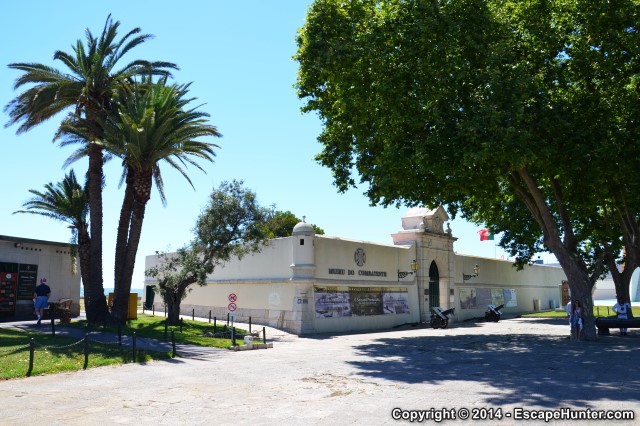
View Photo Gallery for more travel photos
You will find the Forte do Bom Sucesso and the Museu do Combatente in it, just a few hundred meters west of the Torre de Belém.
I personally wouldn't miss out on this museum when in Belém.
The ticket cost me a mere 4 EUR and I felt like it was worth visiting.
It also didn't take a very long time to visit this museum, I probably spent around 40 minutes in there, but doable in 20-30 minutes, if you're in a rush.
There are several smaller rooms containing weapons and other equipment, photos. And, there's a larger indoor area composed of multiple large rooms - these are full of aicraft models and a bunch of equipment from jetfighter gear to fighter plane missile launchers.
The yard has a number of exposed guns, cannons and vehicles - interesting to military technology enthusiasts.
This museum is significantly different from the Lisbon Military Museum, which emphasizes of Portugal's ancient military history, including the middle ages, the colonial era... I believe the two museums complement each other.
The Museu do Combatente puts more accent on the 20th century and displays 20th century equipment.
Less theory, less text, less photos here, mostly hard cold steel!
...and a bunch of airplane models...
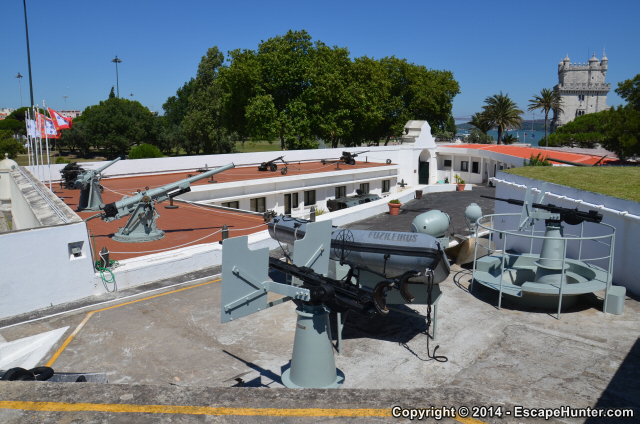
View of Museu do Combatente
View Photo Gallery for more travel photos
I find the idea great to establish a military museum inside a fortress (where else, right?). But as obvious as it sounds, I think this is a necessity as well - in order to attract visitors.
Still, I was the only one curious about this museum. Most people don't wander a few hundred meters further from the Belém Tower.
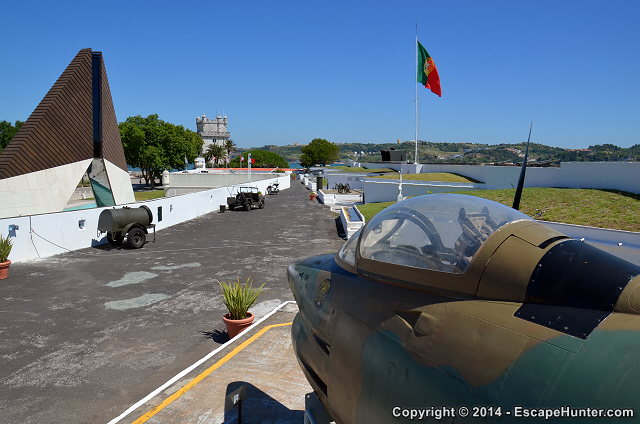
From behind a jet-plane cockpit
View Photo Gallery for more travel photos
I had the entire place for myself, not a single visitor anywhere.
I checked out every single artillery piece and that old tank.
One of the first items I spotted was this 105 mm field howitzer (Italian-manufactured)...
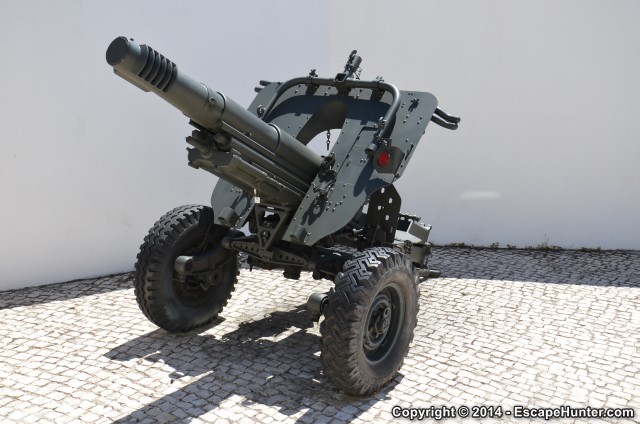
OTO-Melara Mod 56 field howitzer
View Photo Gallery for more travel photos
The OTO-Melara Mod 56 105 mm howitzer is a field gun.
Very light (just 1,800 kg), fires projectiles to a maximum range of 10 km (6.21 mi) and requires a crew of 7 to operate.
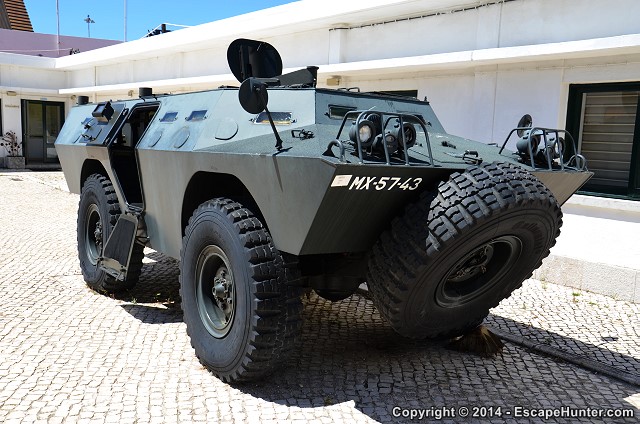
Bravia Chaimite
View Photo Gallery for more travel photos
The Bravia Chaimite is 4x4 Portuguese-built armoured personnel carrier vehicle.
It was used in the Portuguese Colonial Wars in 1967-1974, so it's quite old, but oddly they're still in use (as of mid-2014).
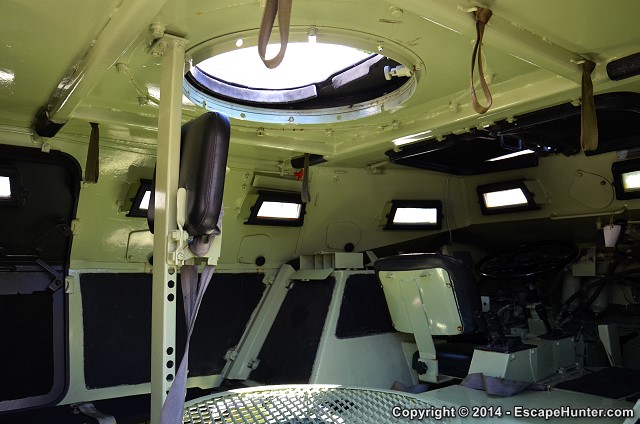
Taking a look inside
View Photo Gallery for more travel photos
The interior felt claustrophobic. When it fills with troops, it must feel like in a sardine can waiting to burst.
The vehicle is designed to transport a crew of 11, but I'd personally think it would feel terribly cramped even for 5-6.
Visibiltiy is even worse...
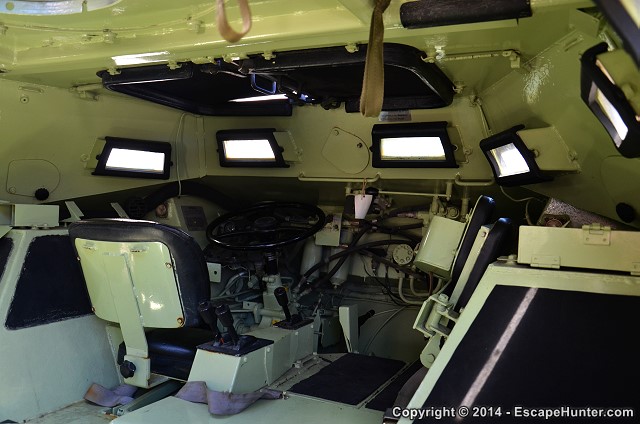
Interior, driver's seat
View Photo Gallery for more travel photos
The armour is quite thin. A modern machine gun could pierce right through with ease. But this is 1960's-'70's technology, let's not forget.
More than 600 were built of the Chaimite.
There are many versions besides military ones, including the riot police variants.
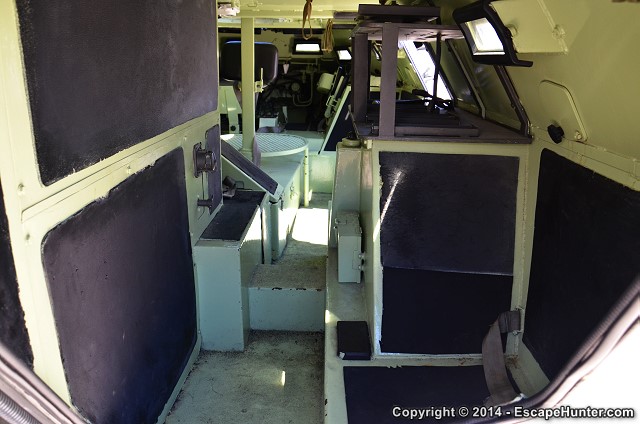
There is a rear door as well. Another seat there.
View Photo Gallery for more travel photos
The Chaimite has an engine developing 155 hp, a range of 804 km and can reach a speed of 99 km/h (62 mph) on land.
In amphibious mode: 4.8 km/h (2.98 mi) is its maximum speed. Too slow in a combat situation.
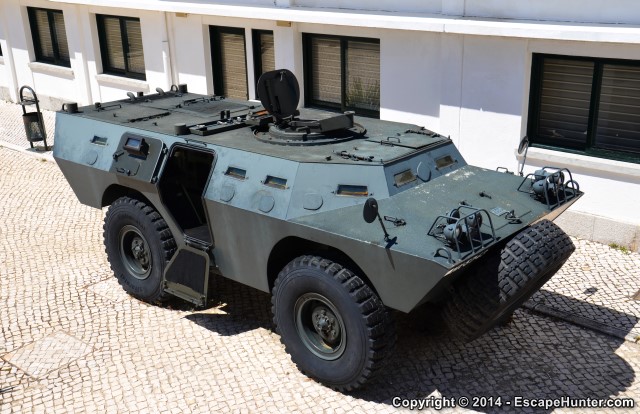
Checking it out from above
View Photo Gallery for more travel photos
As I mentioned earlier, the armour is rather thin, but the fact that it's sloped in so many areas, is supposed to help (smaller bullets would bounce off - in theory...).
The engine is found in the rear left part of the APCV.
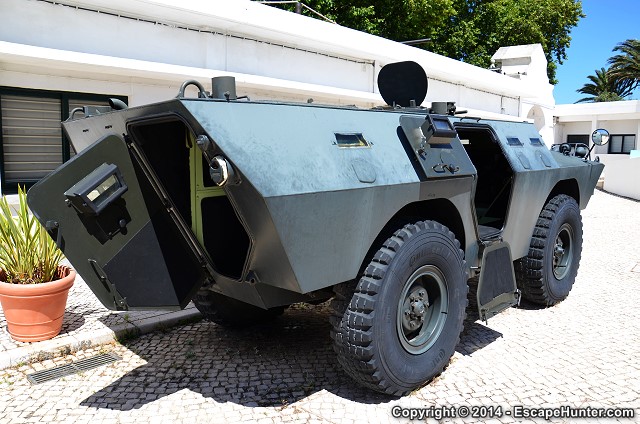
Notice the sloped armour
View Photo Gallery for more travel photos
The Fiat G.91 fighter bomber has entered Portuguese service in 1961. They were used in fighting in the African colonies during the Portuguese Colonial Wars.
A cockpit section of the plane was exposed.
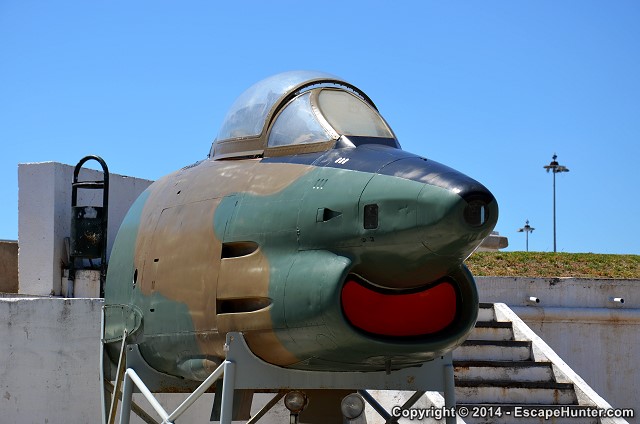
Only the cut-off cockpit section of a Fiat G.91 fighter-bomber
View Photo Gallery for more travel photos
This plane could fly at a speed of 1,075 km/h (668 mph), had a range of 1,150 km (715 mi) and this version had 4x 12.7 mm (0.50 in) M2 Browning heavy machine guns.
Next is the Willy's Jeep!
Produced between 1941-1945, but has remained in service for decades after in many countries. It looks like Portugal also used it.
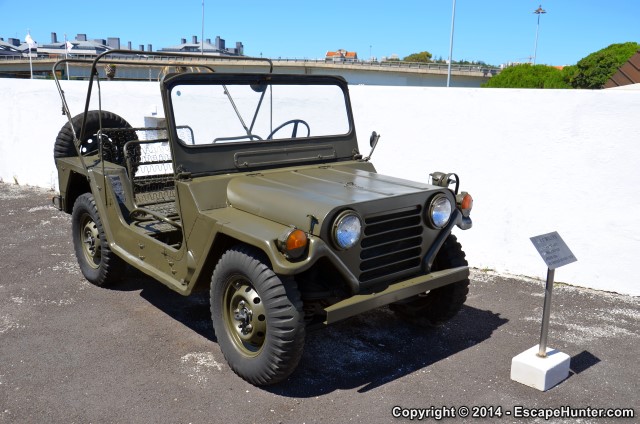
The famous Willy's Jeep was also used by Portugal
View Photo Gallery for more travel photos
The models had 2-speed or 3-speed manual transmission, weighed about 1 ton (gosh, that's terribly heavy!). And without armour, the crew was exposed to enemy fire.
The range was 458 km (285 mi), maximum speed 104 km/h (65 mph) and it had a 15 gallon fuel tank (about 56.78 L).
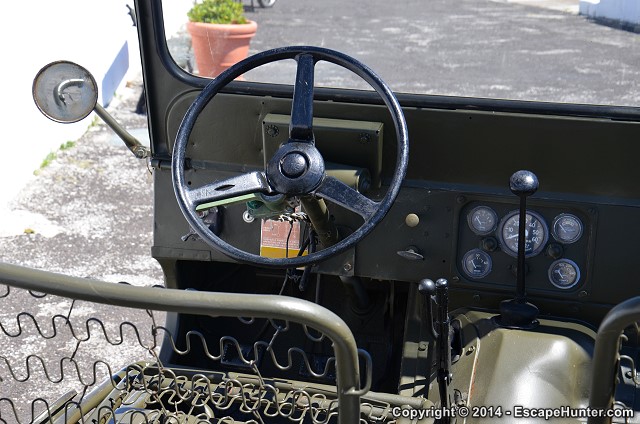
So minimalist with the bare necessities
View Photo Gallery for more travel photos
The M3 Stuart is a light tank developed in the United States during WWII, produced in 1941-1944 with over 25,000 pieces made.
14.7 tonnes heavy. Maximum speeds: 58 km/h (36 mph) on road, 29 km/h (18 mph) off-road.
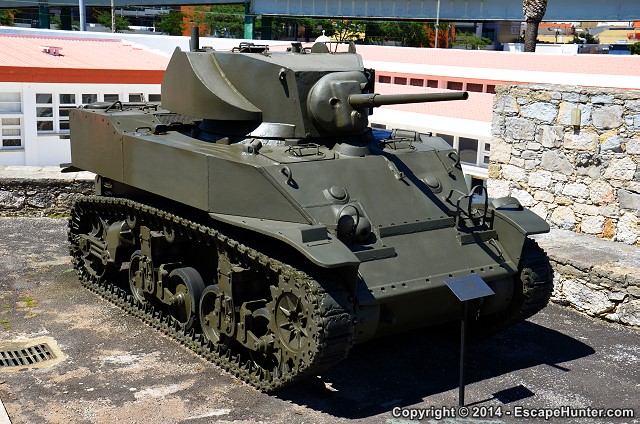
M3 Stuart light tank
View Photo Gallery for more travel photos
The tank had a 37 mm main gun, but carried 7,500 bullets for its 3 machine guns(!).
The engine was 250 hp strong. Some modern SUV's do so good or even better...
The M3 was used by Portugal from 1956 until 1972. 70 pieces were bought for the army.
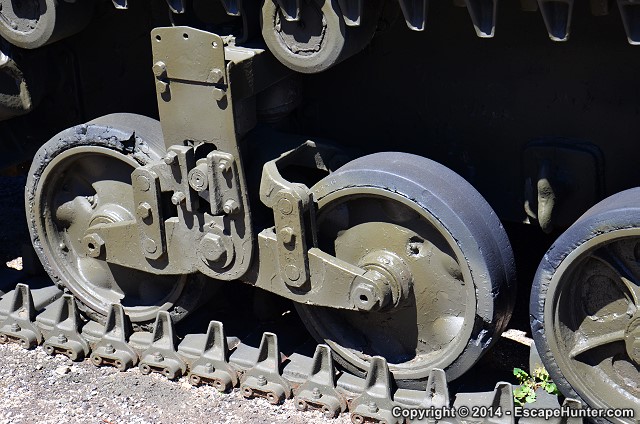
Notice the rubber around some wheels
View Photo Gallery for more travel photos
Besides the few motor vehicles, there were all sorts of heavy machine guns, anti-aricraft guns and some naval guns.
Below you can see a quad anti-aircraft machine gun composed of four 0.50 cal Browning machine guns. Effective only against very low-flying aircraft.
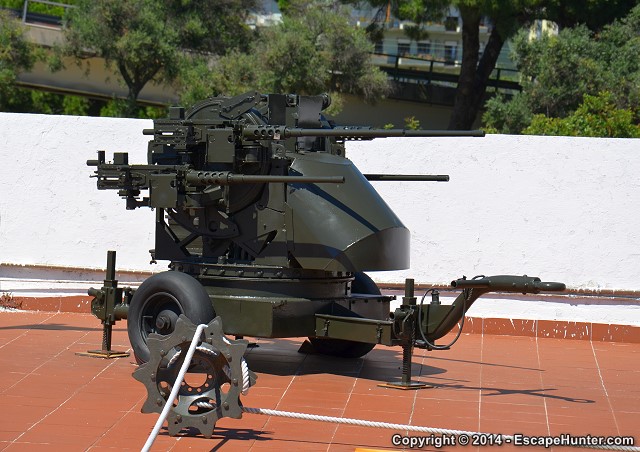
Old 4-barrel anti-aircraft gun
View Photo Gallery for more travel photos
Most of what is exposed outside are heavy machine guns and artillery pieces.
Next is a naval heavy machine gun...
I reckon this too had dual use: probably effective against smaller targets and probably even against low-flying aircraft.
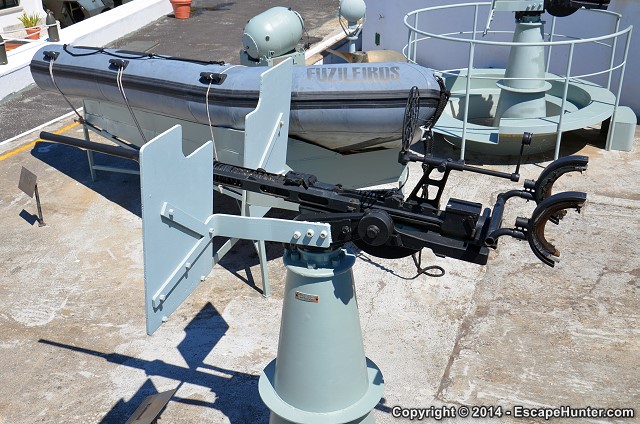
Naval heavy machine gun
View Photo Gallery for more travel photos
Signal lamps still exist on modern ships. Even today, in the 21st century, they sometimes use Morse codes (obvious why: they cannot be jammed and unless someone sees the light flicker, they cannot decipher the message).
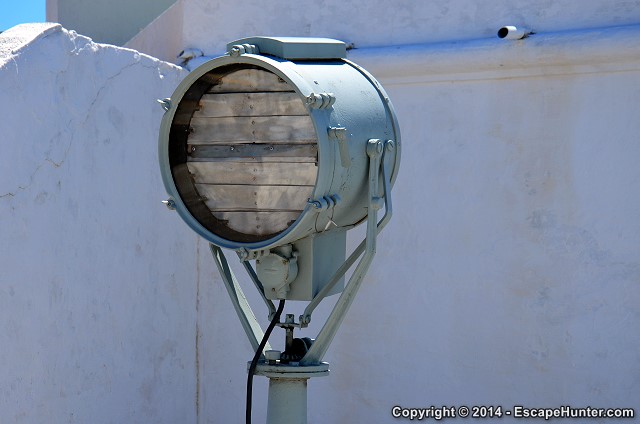
Signal lamp: this mechanism was used for naval light signals
View Photo Gallery for more travel photos
Back in the old days, before WWII and even before WWI, cars were simply armoured by adding steel plaques to them.
Today, in the 21st century, these are an odd sight, but I think they're really beautiful.
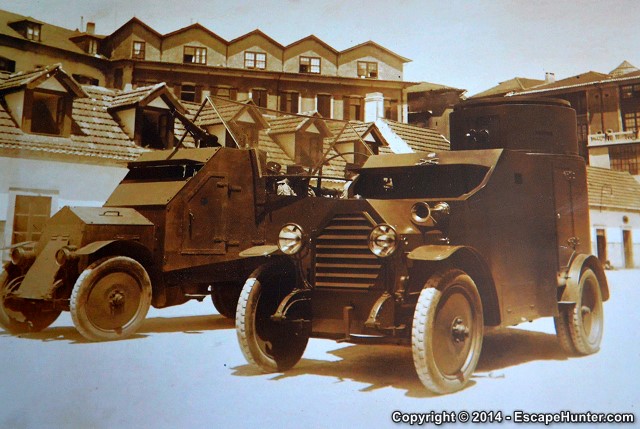
Armoured cars
View Photo Gallery for more travel photos
Some jet-planes, particularly the lighter ones have no built-in guns.
This is why heavy machine gun pods are installed either on the belly or on the wings of the aircraft. These contain the guns, as well as the ammunition.
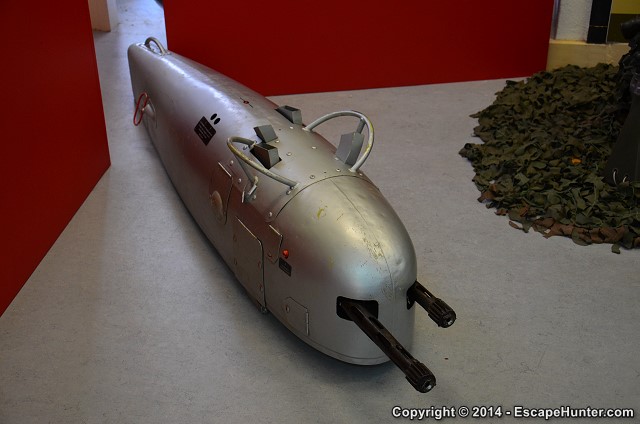
An underbelly gun pod for fighter aircraft
View Photo Gallery for more travel photos
One of the most feared fighter planes in WWII was the Messerschmidt Bf 109.
Just under 34,000 we built from this machine.
A handful still exist today - and they fly occasionally at air shows.
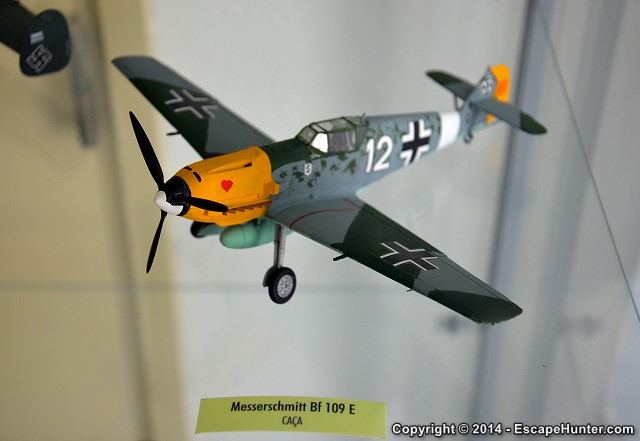
Messerschmidt Bf 109 model
View Photo Gallery for more travel photos
Outside the Museo do Combatente, you will find a monument dedicated to the Portuguese soldiers who died in the Colonial War.
What shocked me was the sheer number of names on the large white wall that you can see in the background.
More than 8,800 Portuguese soldiers were killed and around 60-70 thousand civilian Africans died in the Colonial War, between 1961-1974.
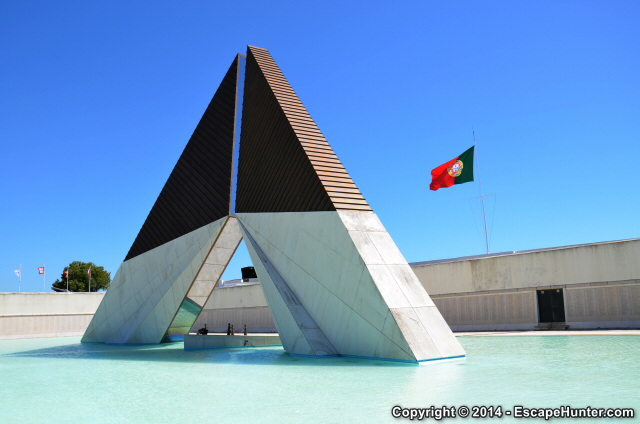
Monumento Combatentes Ultramar
View Photo Gallery for more travel photos

About the Author:
Escape Hunter, the young solo traveler in his early 30's explores the World driven by curiosity, thirst for adventure, deep passion for beauty, love for freedom and diversity.
With a nuanced, even humorous approach to travel, an obsession for art and design, Escape Hunter prefers to travel slowly, in order to learn and "soak up" the local atmosphere...
Comments

As "Escape Hunter" - the curious incognito traveler with an insatiable drive to explore, I embark on slow and deep travels around
our beautiful World.
Join me and I will show you exciting destinations
"from within", through my
"escape" trips!

Travel Slang Dictionary
Guide to my personal travel slang vocabulary, which seasons my content...

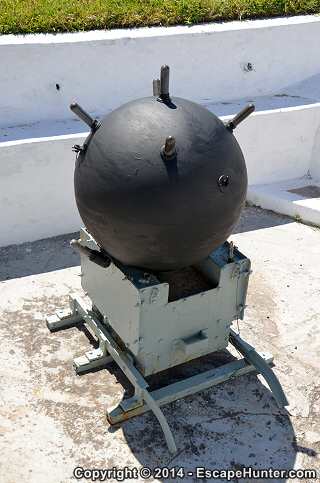





The military museum is inside a beautiful old white fortress